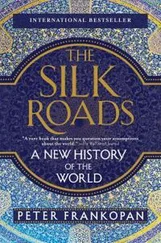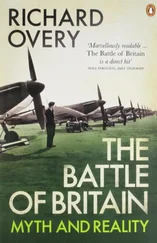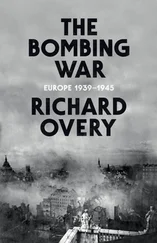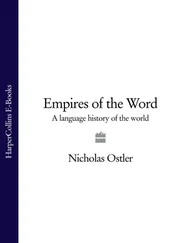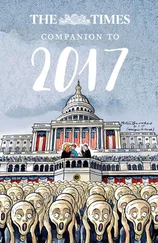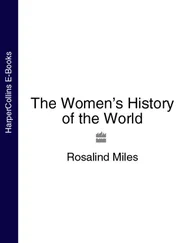The supply of food, or its absence, famine, is a constant through human history. It exercised the ancient Egyptians, who developed complex irrigation systems to compensate for a buoyant population surrounded by desert; 3,000 years later Adolf Hitler argued that Germans needed ‘living space’ in Eastern Europe to provide a proper balance between population and food supply; the contemporary world, trying to support a vastly greater population, witnesses famines in Africa side-by-side with an overabundance of food in the richer West. A new food crisis in 2008 has prompted the bleak conclusion that food output must expand 50 per cent by 2030 to meet demand. For most people through most of recorded history the search for food has been unyielding. In hunting communities, as long as there existed a wealth of animal life or fish, food was not a problem. In settled, agricultural communities, on the other hand, the supply of food was restricted either by problems of soil or changeable climate or by the maldistribution of food between rich and poor, or both. Tilling the soil was no guarantee of a decent diet; a Roman feast or a groaning Victorian banquet gives no clue as to how inadequate was the food supply for the slaves who grew and garnered it in Roman Italy, or for the Victorian poor, most of them cut off from the land and dependent on a monotonous starch-rich diet. In post-Renaissance Italy there developed one of the most sophisticated cuisines in the world, informed by a wealth of gastronomic master-works, but the later peasant workers of the Po Valley suffered debilitating pellagra from eating a stodgy maize-based diet that inflated their abdomens and eventually killed them. In settled civilizations, an adequate, varied, artistically presented or innovative diet was the preserve of the rich. It was no accident that the Russian Revolution of February 1917 began with a demonstration for bread by hungry women in St Petersburg (Petrograd).
The relationship between mankind and environment has changed a good deal over the past 200 years. Larger and more regular food supplies together with changes in healthcare have provoked a population explosion. Global population was around 800 million in the 18th century; currently it is an astonishing 6.7 billion. A result has been the massive expansion of the agricultural base, partly from utilising virgin lands, partly from raising yields artificially through plant- and stock-breeding or the addition of chemical fertiliser. These changes have provoked deforestation and the transformation of natural habitat. Heavy hunting has brought thousands of land and sea creatures to the edge of extinction. The world’s urban population has grown dramatically since 1900 and now stands at just over 50 per cent of the whole, producing huge sprawling cities and high levels of human pollution. To meet the daily needs of such a population has meant expanding industrial production, depleting the earth’s natural resources, and creating a growing chemical imbalance in the atmosphere that has damaged the ozone layer and threatens through so-called ‘global warming’ to undermine the fragile basis on which 6 billion people can subsist. Demands for a higher living standard from Western populations already rich in resources, and for catch-up living standards in much of the rest of the world, has accelerated the depletion of resources, the transformation of the landscape and the unnatural climate change. The rich United States has 5 per cent of the world’s population but generates annually 25 per cent of the ‘greenhouse gases’ that cause climate change. The most alarming scenarios are now painted of the capacity of man to forge new natural disasters to which there will be no answer—enough methane gas perhaps to cause a global explosion in a century’s time, or the release of bacteria from the frozen icecaps millions of years old, from which current populations would have no prospect of immunity. The relationship between man and nature has about it a profound irony. The attempt to master the natural world has simply given nature new and more terrible powers.
Only in one respect has it proved possible to tame nature sufficiently to alter human society for the good. Over the past 150 years, in itself a fraction of the long history of man, it has proved possible to understand and then prevent or cure most medical conditions. For all the rest of human history, disease and disability were an ever-present reality for which there was almost no effective relief. The establishment of cities and animal husbandry combined to create ideal conditions for the establishment of a cluster of endemic epidemic diseases which periodically killed off wide swathes of the human host. The earliest epidemics in the cities of the first civilizations in China, Egypt or Mesopotamia included smallpox, diphtheria, influenza, chickenpox and mumps. With the opening of trade routes and regular invasions, disease could be spread from populations that had developed some immunity to those biologically vulnerable. Athens was struck by a devastating plague in 430 BC which undermined its political power; the Antonine plague in the late-2nd-century AD Roman Empire killed around one-quarter of the populations it infected, probably with smallpox. Bubonic plague, transmitted by fleas carried on rats, killed around two-thirds of its victims. Plague originating in Egypt in 540 AD spread to the Eastern Mediterranean where again one-quarter of the population died. The famous Black Death in the 14th century swept from Asia to Europe, killing an estimated 20 million and reducing Europe’s population by one-quarter. Epidemics died out partly because the pathogens had no other victims to kill. Modernity was no safeguard either. Cholera coincided with the industrialization and urbanization of Europe and produced regular pandemics in Asia, the Middle East and Europe between the 1820s and the 1890s. ‘Spanish influenza’ struck Europe at the end of the First World War with populations unnaturally weakened by lack of food; it was the world’s worst pandemic, killing 60 million people in just two years.
The attempt to understand and explain the nature of disease, and if possible cure it, goes back to the very earliest periods of recorded history. Classic Chinese medicine (now usually described as Traditional Chinese Medicine or TCM) is thought to date back almost 5,000 years. The standard text on ‘Basic Questions of Internal Medicine’ (known as Neijing Suwen ) was written, according to legend, by the Yellow Emperor around 2,600 BC; the earliest surviving version dates from at least 2,000 years ago. Early Chinese medicine was rooted in a broader philosophical system based in one case on Confucianism, in the second on Taoism. Confucianism rejected the idea of anatomical or surgical invasion in the belief that the body was sacred; instead the use of acupuncture or massage was preferred, influencing internal disease by external means. Taoism saw health related entirely to achieving harmony between the different elements of the world, the Yin and the Yang. Disease was a consequence of lack of harmony. Chinese medicine focused on herbal remedies and acupuncture as means to restore that harmony rather than more violent medical intervention. Close observation of morbid symptoms was regarded as essential to understand what combination of remedies was needed. During the brief Sui dynasty (581–618 AD) a group of doctors composed The General Treatise on the Causes and Symptoms of Disease which comprised 50 volumes and described some 1,700 conditions. The classic texts retained an enduring influence down to the 20th century when successive modernising regimes tried to substitute Western medicine with only limited success.
The other classic tradition arose in Greece from the 5th century BC based on the teachings of the secular theorist Hippocrates, born around 460, whose famous ‘oath’, that doctors should at the least do no harm, is still sworn by Western doctors today. Like Chinese medicine, Greek medicine relied on explaining disease as an absence of harmony in the body between four elements or ‘humours’ that composed it. The elements were blood, choler (yellow bile), phlegm and black bile. These humours corresponded to the elements identified by Greek science as universal components—air (blood), fire (choler), water (phlegm) and earth (black bile). Cure for any imbalance was based on a range of options—bleeding, diet, exercise and occasional surgery. These views, revived in medieval Europe, exercised a continuing influence down to the time when modern medical science made its first appearance in the European Renaissance, and even beyond it. The problem for Greek as for Chinese medicine was the strong prejudice against direct anatomical research on human cadavers. In all pre-scientific medical systems an absence of proper understanding of the function of the body and the cause of disease meant that cures were largely accidental. Recent tests on 200 Chinese traditional herbal remedies for malaria found that only one, by chance, contained anything that might contribute to a cure.
Читать дальше

